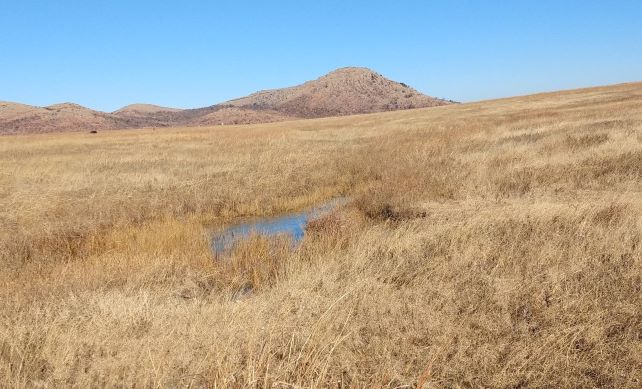A wintering water hole in the Wichita Mountains Wildlife Refuge can be a critical resource for non-breeding populations of migratory birds that need to be in good condition by the time they depart in Spring.
For a number of reasons, temperate-zone field ecology in the winter lags far behind the depth of knowledge we have about the Spring-Summer breeding season. Yet, for many species this represents a majority of their annual life-cycle and can be of critical conservation importance.
Our lab is addressing this scarcity of non-breeding information by gathering knowledge on the wintering and behavioral ecology of a declining suite of migratory birds that use Oklahoma’s diverse grassland habitat, the New-world longspurs (Calcariidae). We are examining fundamental questions on habitat use and movement. Yet we are also examining flock dynamics relative to weather severity; our hypothesis being that these may be periods of elevated risk for the birds and times when surveys may be much more affected by the detectability of flocks.

Follow the project here.


Leave a Reply